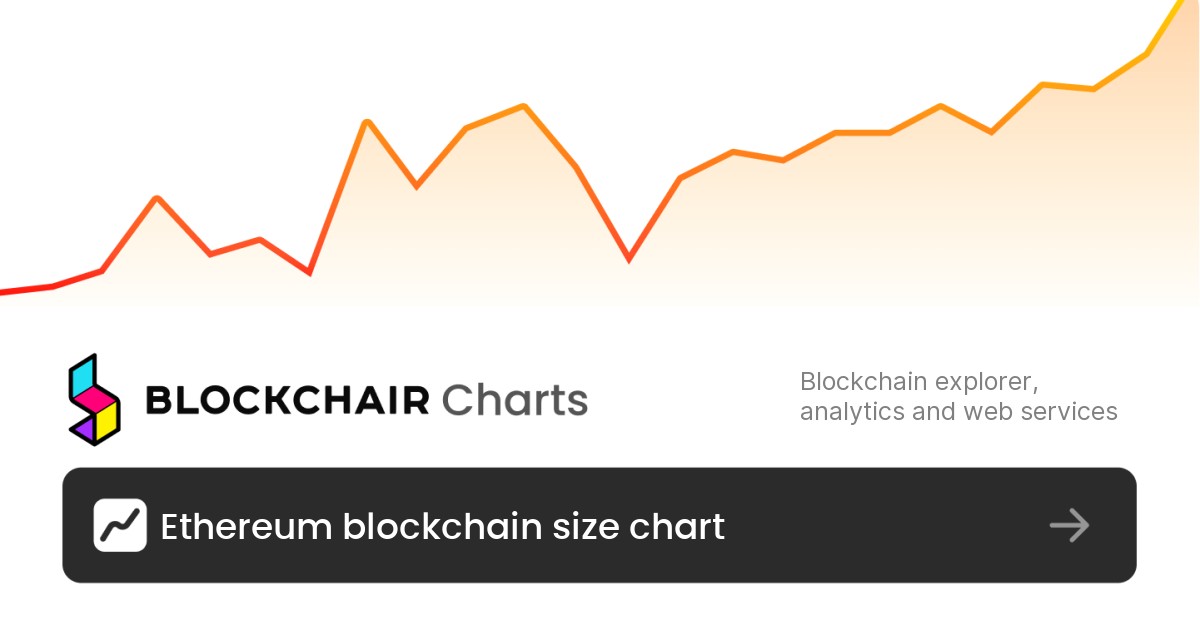With the ethereum blockchain size chart at the forefront, we dive into the fascinating world of Ethereum, a decentralized platform that has redefined the boundaries of blockchain technology. Understanding how the blockchain size evolves is crucial for both developers and users alike, as it directly impacts network performance and scalability. Throughout its journey from inception to the present day, Ethereum has experienced significant growth, and the size of its blockchain is a key indicator of that ongoing evolution.
As we explore the concept of blockchain size, we will break down its components, examine the metrics used to measure it, and analyze its implications for the Ethereum network. Such insights will help demystify this intricate, yet vital aspect of the blockchain ecosystem.
Introduction to Ethereum Blockchain
The Ethereum blockchain represents a groundbreaking evolution in the blockchain ecosystem, enabling the development and execution of smart contracts and decentralized applications (dApps). It operates on a decentralized platform, allowing developers to create and deploy applications without the need for intermediaries. Understanding the significance and functionality of Ethereum is crucial, especially as it stands as a cornerstone for many innovations in the crypto space.Grasping the concept of blockchain size is vital for comprehending how Ethereum operates and scales.
The size of the blockchain can provide insights into transaction volume, network health, and the overall efficiency of the Ethereum platform. Since its inception in 2015, Ethereum has experienced tremendous growth, evolving from a novel idea to a major player in the cryptocurrency landscape, marked by numerous upgrades, forks, and community-driven initiatives.
Understanding Blockchain Size
Blockchain size refers to the total amount of data that a blockchain contains, which includes transaction records, smart contracts, and other essential components. As the Ethereum network continues to expand, the size of its blockchain grows, impacting its performance and scalability. A larger blockchain can lead to longer synchronization times for nodes and increased storage requirements, which could affect overall network efficiency.Key metrics to measure blockchain size include:
- Block Height: Represents the total number of blocks in the blockchain.
- Data Size: The total size of the blockchain data stored in gigabytes (GB).
- Transaction Count: The total number of transactions processed and recorded on the blockchain.
Ethereum Blockchain Size Chart
The Ethereum blockchain size has varied significantly over the years, reflecting its rapid adoption and development. Below is a table showcasing the Ethereum blockchain size at different intervals:
| Year | Block Height | Data Size (GB) |
|---|---|---|
| 2015 | 1,000,000 | 1.5 |
| 2016 | 2,000,000 | 5.0 |
| 2017 | 3,500,000 | 15.0 |
| 2020 | 10,000,000 | 70.0 |
| 2023 | 15,000,000 | 150.0 |
Interpreting the data from the blockchain size chart reveals trends that correlate with significant events in the Ethereum ecosystem. For instance, the increase in blockchain size in 2017 coincides with the rise of Initial Coin Offerings (ICOs) and the resulting surge in transaction volume.
Factors Affecting Ethereum Blockchain Size
Several factors contribute to the growth of the Ethereum blockchain size, including transaction volume, the proliferation of smart contracts, and ongoing network upgrades. As more users engage with the platform, the number of transactions increases, directly impacting the blockchain’s storage requirements.Blockchain upgrades, such as the transition to Ethereum 2.0, also play a critical role in influencing size. These upgrades aim to improve scalability and efficiency, potentially stabilizing or even reducing the rate of size increase over time.When comparing Ethereum’s growth in blockchain size to other blockchains such as Bitcoin or Binance Smart Chain, it’s evident that Ethereum’s diverse use cases and higher transaction volume contribute to its larger blockchain size.
Implications of Blockchain Size on Users

As blockchain size increases, users may experience various implications, notably longer transaction times and reduced user experience. Larger blockchains can complicate node operations, making it harder for users to synchronize and validate transactions quickly.Challenges faced by users and developers due to blockchain size include:
- Increased storage costs for running a full node.
- Slower transaction processing times during peak usage.
- Higher barriers to entry for new participants wishing to operate a node.
To mitigate the impacts of blockchain size on network performance, several strategies can be employed, such as implementing layer 2 solutions, optimizing smart contracts, and encouraging off-chain transactions.
Future Projections of Ethereum Blockchain Size
Looking ahead, predictions for Ethereum’s blockchain size suggest continued growth, driven by increasing adoption and usage. A table outlining future blockchain size projections based on current trends is as follows:
| Year | Projected Data Size (GB) |
|---|---|
| 2024 | 200.0 |
| 2025 | 300.0 |
| 2030 | 500.0 |
Potential advancements in technology, such as sharding and improved consensus mechanisms, may influence blockchain size management. The importance of scalability solutions cannot be overstated, as they will play a vital role in accommodating Ethereum’s growth in data and users.
Tools for Analyzing Ethereum Blockchain Size
Several tools and platforms exist for monitoring Ethereum blockchain size, assisting developers and users in analyzing data more effectively. Some noteworthy tools include:
- Etherscan: A block explorer that provides insights into blockchain size, transaction history, and smart contracts.
- Infura: A service that allows developers to access Ethereum without needing to run their own nodes, simplifying the monitoring process.
- Blockchair: A versatile blockchain explorer offering various metrics related to blockchain size and performance.
When using these tools, it is crucial to focus on features like real-time data updates, comprehensive analytics, and user-friendly interfaces to enhance the analysis experience.
Community Insights and Perspectives

The Ethereum community actively engages in discussions regarding blockchain size challenges, with industry experts weighing in on the implications of its growth. Insights gathered from community discussions highlight concerns over scalability, transaction fees, and overall network usability.Recommendations from the community for future developments include:
- Enhancing Layer 2 solutions to alleviate congestion on the main blockchain.
- Encouraging developers to optimize smart contract efficiency.
- Implementing educational initiatives to inform users about blockchain size and scalability solutions.
These perspectives are invaluable as Ethereum continues to navigate the complexities of its blockchain size and strives for sustainable growth.
Closure

In conclusion, the ethereum blockchain size chart provides us with a wealth of information that reflects the burgeoning growth of Ethereum and its underlying technology. As we navigate through the complexities of blockchain size, it becomes increasingly clear how essential it is to comprehend its implications on user experience and network performance. Armed with this knowledge, both developers and users can better prepare for the future of Ethereum as it continues to expand and innovate.
Common Queries
What is the current size of the Ethereum blockchain?
The current size of the Ethereum blockchain is constantly changing, but as of the latest updates, it is approximately several hundred gigabytes.
How often does the Ethereum blockchain size increase?
The Ethereum blockchain size typically increases with each block added, which occurs about every 15 seconds, depending on transaction volume.
Can users mitigate the impact of a growing blockchain size?
Yes, users can mitigate the impact by utilizing off-chain solutions or layer 2 solutions that help reduce congestion and improve transaction speeds.
How does Ethereum’s blockchain size compare to Bitcoin’s?
Ethereum’s blockchain size generally grows faster than Bitcoin’s due to higher transaction volumes and more complex smart contracts.
What tools can be used to analyze blockchain size?
Several tools, including Etherscan and Ethplorer, can be used to monitor and analyze Ethereum’s blockchain size effectively.


